Antifriction and Antiwear Effect of Lamellar ZrS2 Nanobelts as Lubricant Additives
Abstract
:1. Introduction
2. Experimental Details
2.1. Lubrication Preparation
2.2. Tribological Tests
2.3. Characterization
3. Results and Discussion
3.1. Influence of the Concentrations of Disulfide Zirconium
3.1.1. Friction Reducing and Antiwear Effect
3.1.2. Extreme Pressure Properties
3.2. Influence of Temperature
3.3. Influence of Normal Load and Velocity
4. Conclusions
Author Contributions
Funding
Acknowledgments
Conflicts of Interest
References
- Grossiord, C.; Varlot, K.; Martin, J.M.; Mogne, L.T.; Esnouf, C.; Inoue, K. MoS2 single sheet lubrication by molybdenum dithiocarbamate. Tribol. Int. 1998, 31, 737–743. [Google Scholar] [CrossRef]
- Berman, D.; Erdemir, A.; Sumant, A.V. Reduced wear and friction enabled by graphene layers on sliding steel surfaces in dry nitrogen. Carbon 2013, 59, 167–175. [Google Scholar] [CrossRef]
- Huang, H.D.; Tu, J.P.; Gan, L.P.; Li, C.Z. An investigation on tribological properties of graphite nanosheets as oil additive. Wear 2006, 261, 140–144. [Google Scholar] [CrossRef]
- Kalin, M.; Kogovšek, J.; Remškar, M. Mechanisms and improvements in the friction and wear behavior using MoS2 nanotubes as potential oil additives. Wear 2012, 280, 36–45. [Google Scholar] [CrossRef]
- Li, L.; Fang, X.; Zhai, T.; Liao, M.; Gautam, U.K.; Wu, X.; Koide, Y.; Bando, Y.; Golberg, D. Electrical Transport and High-Performance photoconductivity in Individual ZrS2 nanobelts. Adv. Mater. 2010, 22, 4151–4156. [Google Scholar] [CrossRef] [PubMed]
- Jeong, S.H.; Yoo, D.W.; Jang, J.T.; Kim, M.Y.; Cheon, Y.W. Well-Defined colloidal 2D layered transition-metal chalcogenide nanocrystals via generalized synthetic protocols. J. Am. Chem. Soc. 2012, 134, 18233–18236. [Google Scholar] [CrossRef] [PubMed]
- Rapoport, L.; Fleischer, N.; Tenne, R. Fullerene-like WS2 nanoparticles: Superior lubricants for harsh conditions. Adv. Mater. 2003, 15, 651–656. [Google Scholar] [CrossRef]
- Gong, K.L.; Wu, X.H.; Zhao, G.Q.; Wang, X.B. Nanosized MoS2 deposited on graphene as lubricant additive in polyalkylene glycol for steel/steel contact at elevated temperature. Tribol. Int. 2017, 110, 1–7. [Google Scholar] [CrossRef]
- Jamison, W.E.; Cosgrove, S.L. Friction characteristics of transition-metal disulfides and diselenides. ASLE Trans. 1971, 14, 62–72. [Google Scholar] [CrossRef]
- Kogovšek, J.; Remškar, M.; Mrzel, A.; Kalin, M. Influence of surface roughness and running-in on the lubrication of steel surfaces with oil containing MoS2 nanotubes in all lubrication regimes. Tribol. Int. 2013, 61, 40–47. [Google Scholar] [CrossRef]
- Aldana, P.U.; Dassenoy, F.; Vacher, B.; Mogne, T.L.; Thiebaut, B. WS2 nanoparticles anti-wear and friction reducing properties on rough surfaces in the presence of ZDDP additive. Tribol. Int. 2016, 102, 213–221. [Google Scholar] [CrossRef]
- Zhang, W.; Cao, Y.; Tian, P.; Guo, F.; Tian, Y.; Zheng, W.; Ji, X.; Liu, J. Soluble, exfoliated two-dimensional nanosheets as excellent aqueous lubricants. ACS Appl. Mater. Interfaces 2016, 8, 32440–32449. [Google Scholar] [CrossRef] [PubMed]
- Jang, J.; Jeong, S.; Seo, J.; Kim, M.; Sim, E.; Oh, Y.; Nam, S.; Park, B.; Cheon, J. Ultrathin zirconium disulfide nanodiscs. J. Am. Chem. Soc. 2011, 133, 7636–7639. [Google Scholar] [CrossRef] [PubMed]
- Wang, H.Y.; Zhao, X.; Gao, Y.H.; Wang, T.X.; Wei, S.Y. Effect of structural defects on electronic and magnetic properties of ZrS2 monolayer. Superlattices Microstruct. 2018, 116, 164–170. [Google Scholar] [CrossRef]
- Lv, H.Y.; Lu, W.J.; Shao, D.F.; Lu, H.Y.; Sun, Y.P. Strain-induced enhancement in the thermoelectric performance of a ZrS2 monolayer. J. Mater. Chem. 2016, 4, 4538–4545. [Google Scholar] [CrossRef]
- Sargar, A.M.; Patil, N.S.; Mane, S.R.; Gawale, S.N.; Bhosale, P.N. Optostructural and electrical studies on electrodeposited Indium doped ZrS2 thin films. J. Alloys Compd. 2009, 474, 14–17. [Google Scholar] [CrossRef]
- Zhang, W.; Zhou, M.; Zhu, H.; Tian, Y.; Wang, K.; Wei, J.; Ji, F.; Li, X.; Li, Z.; Zhang, P. Tribological properties of oleic acid-modified graphene as lubricant oil additives. J. Phys. D Appl. Phys. 2011, 44, 1–4. [Google Scholar] [CrossRef]
- He, X.L.; Xiao, H.P.; Jonathan, P.K.; Elon, J.T.; Liang, H. Two-dimensional nanostructured Y2O3 particles for viscosity modification. Appl. Phys. Lett. 2014, 104, 221–234. [Google Scholar] [CrossRef]
- Ingole, S.; Charanpahari, A.; Kakade, A.; Umare, S.S.; Bhatt, D.V. Tribological behavior of nano TiO2 as an additive in base oil. Wear 2013, 301, 776–785. [Google Scholar] [CrossRef]
- Zulkiflia, N.W.M.; Kalama, M.A.; Masjukia, H.H.; Yunus, R. Experimental analysis of tribological properties of biolubricant with nanoparticle additive. Procedia Eng. 2013, 68, 152–157. [Google Scholar] [CrossRef]
- Xiao, H.P.; Liu, S.H. 2D nanomaterials as lubricant additive: A review. Mater. Des. 2017, 135, 319–332. [Google Scholar] [CrossRef]
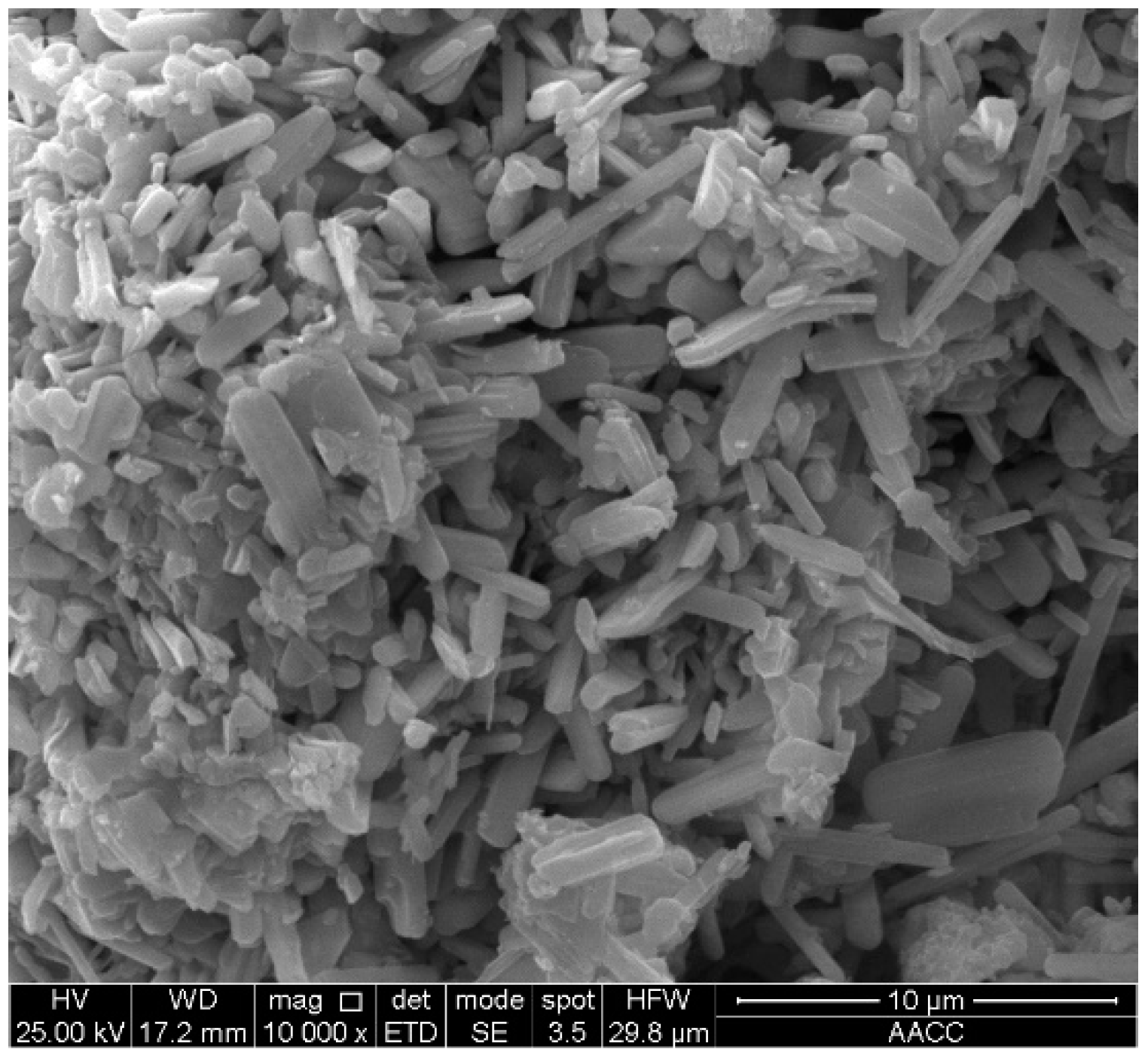
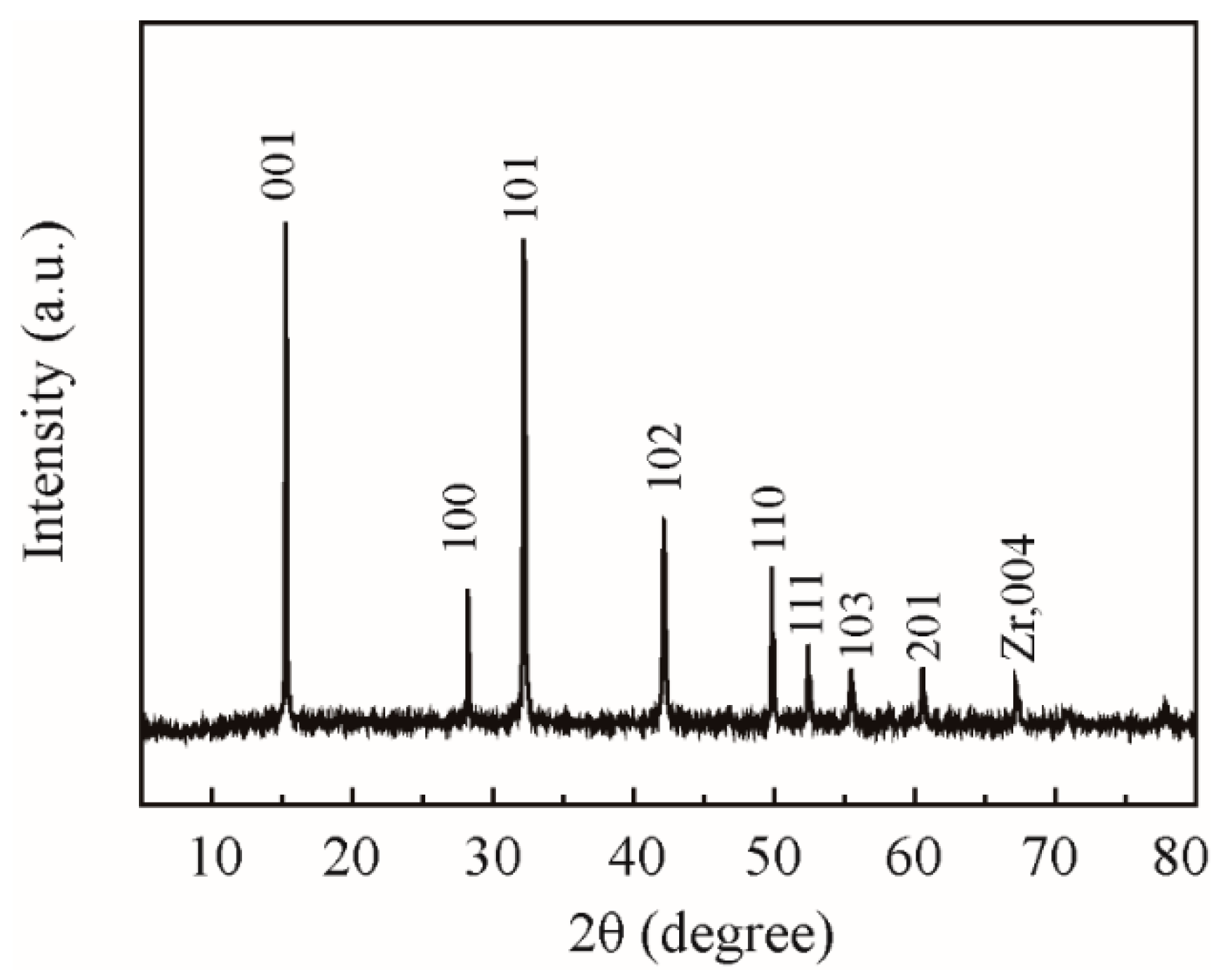
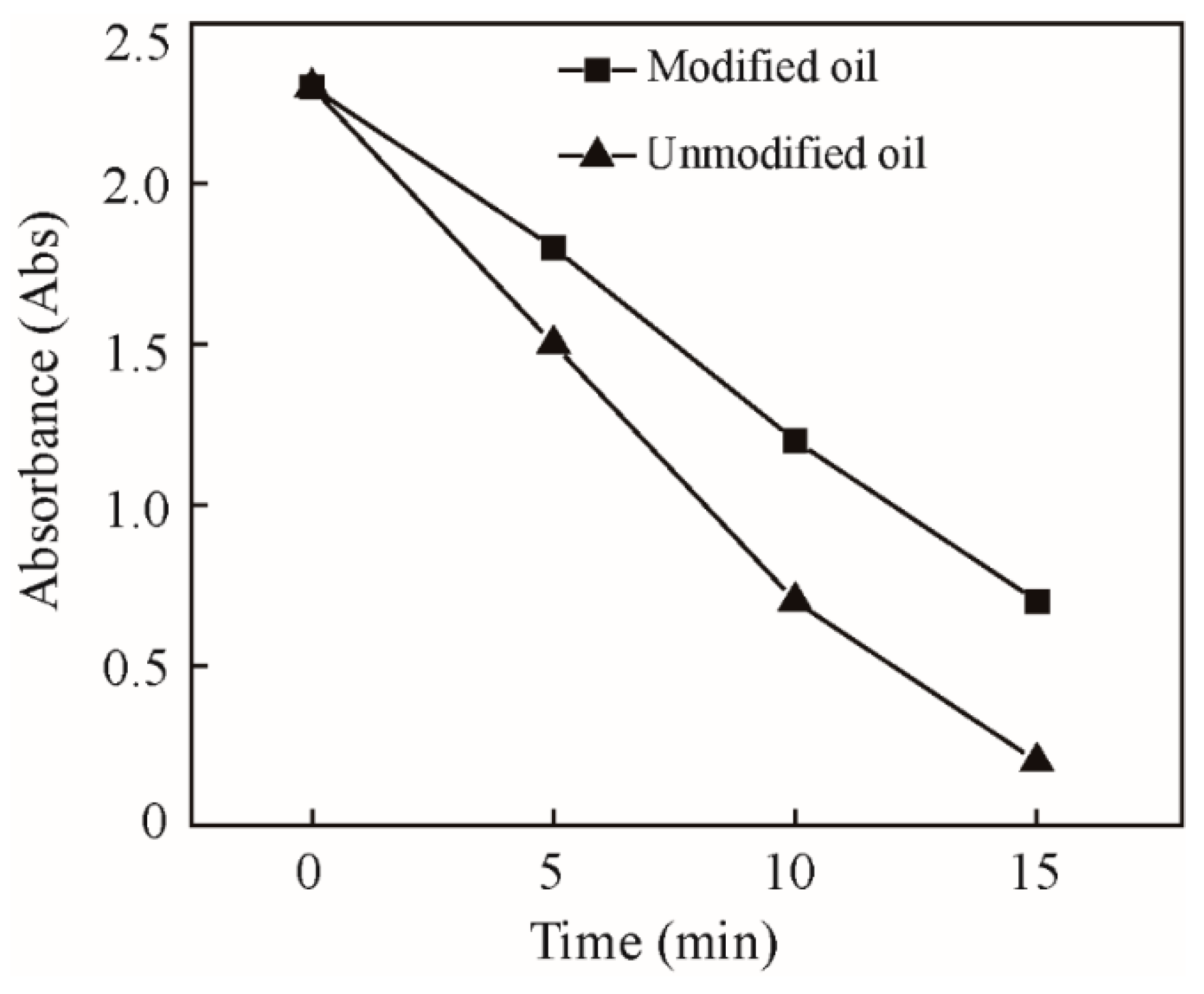


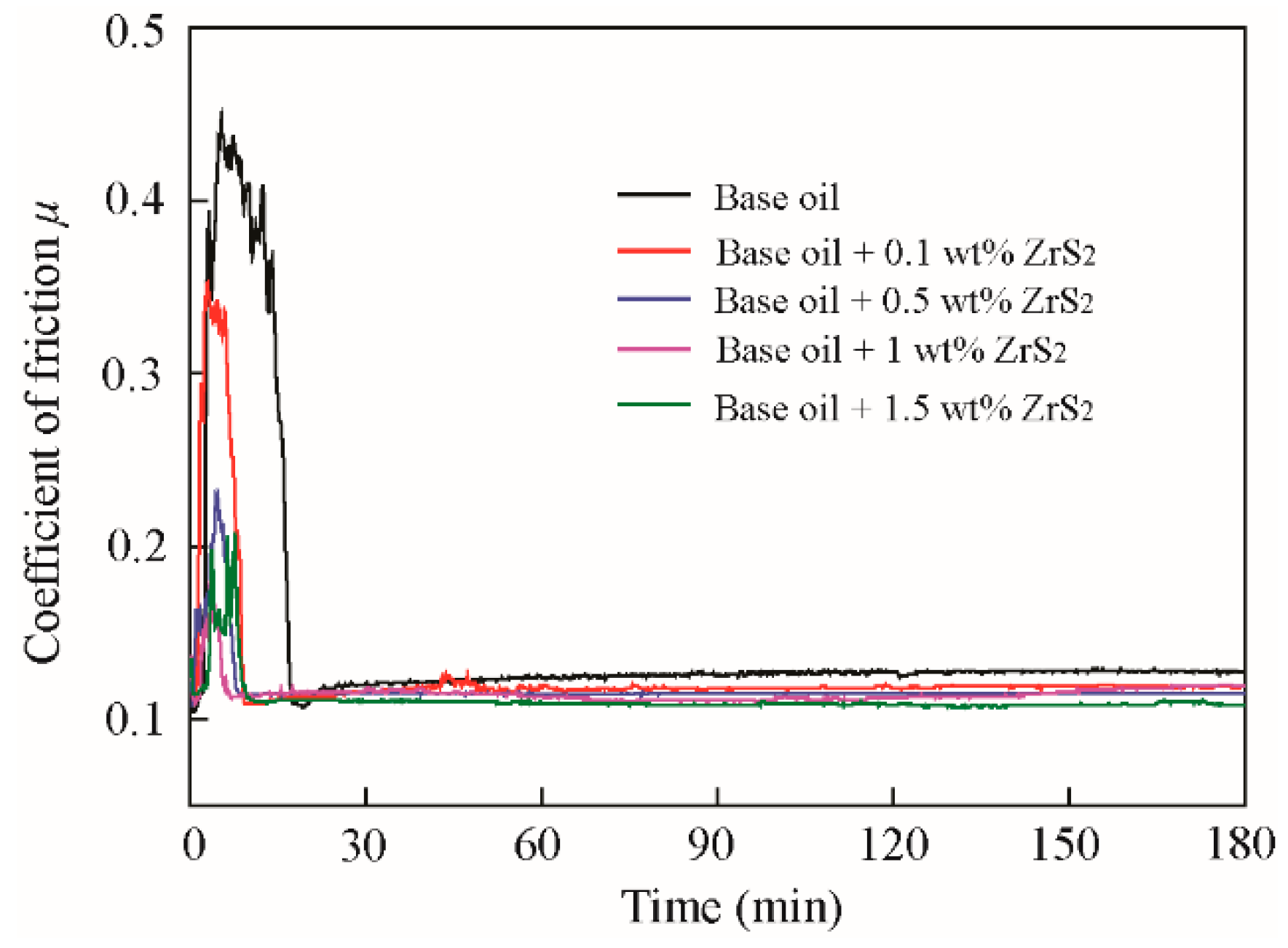
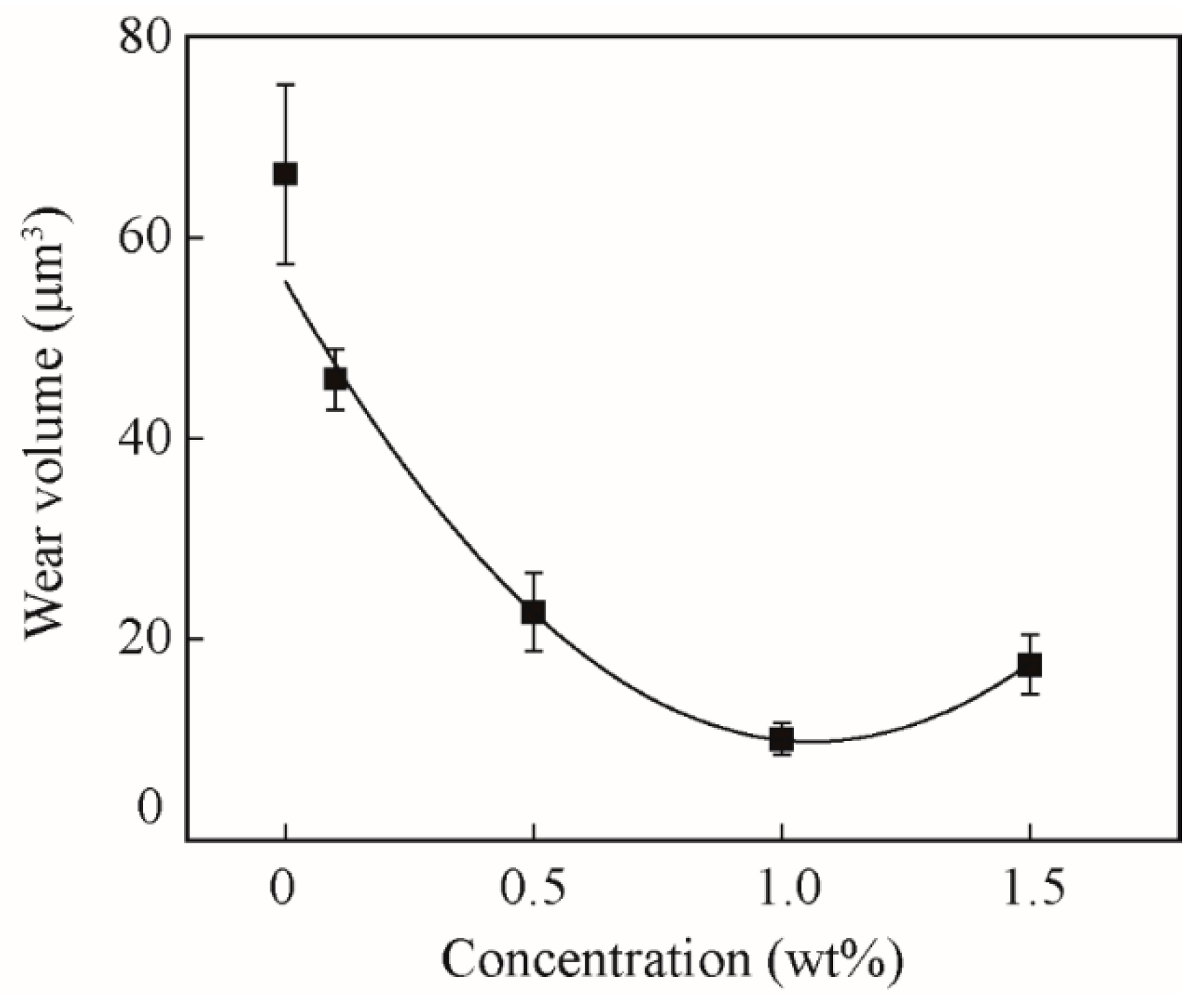
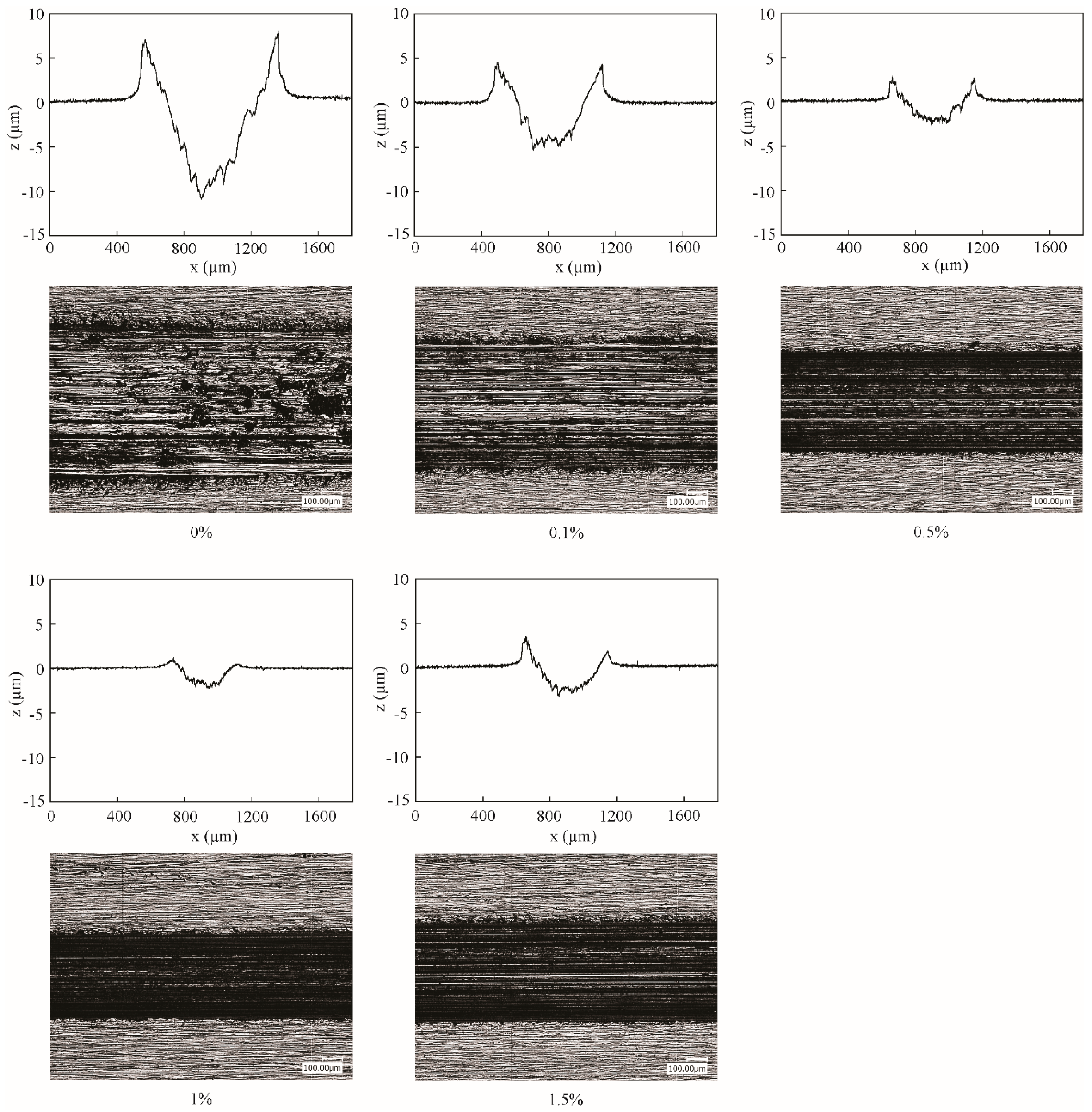


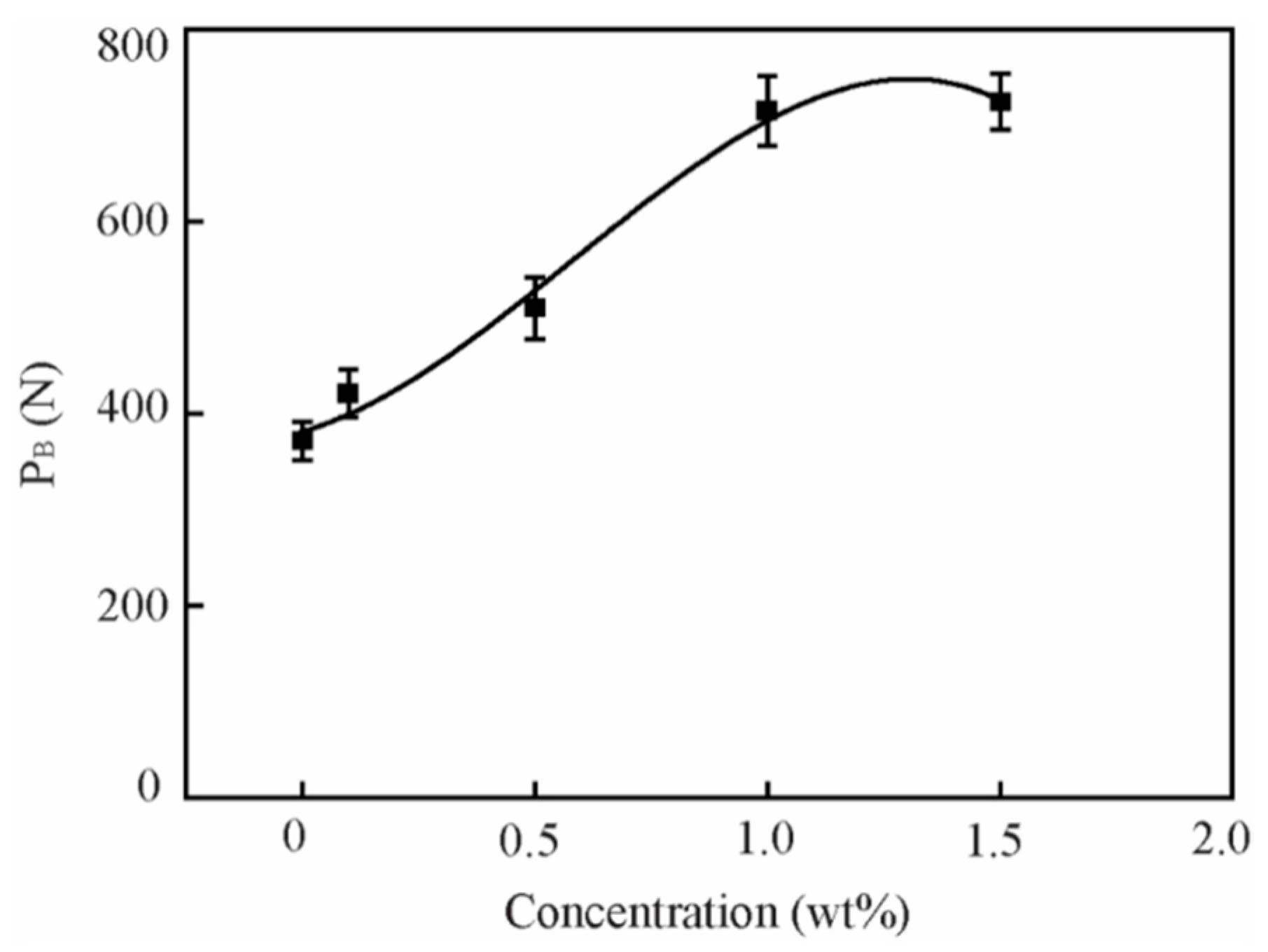
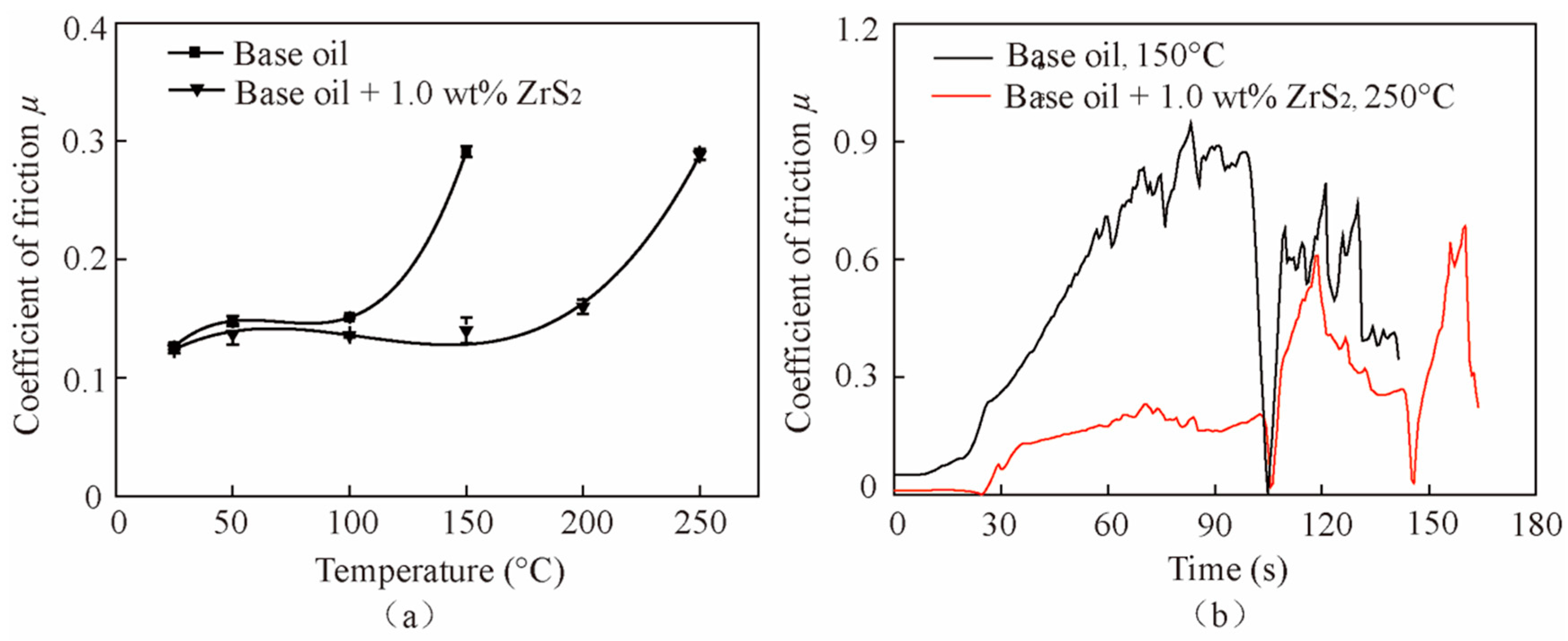
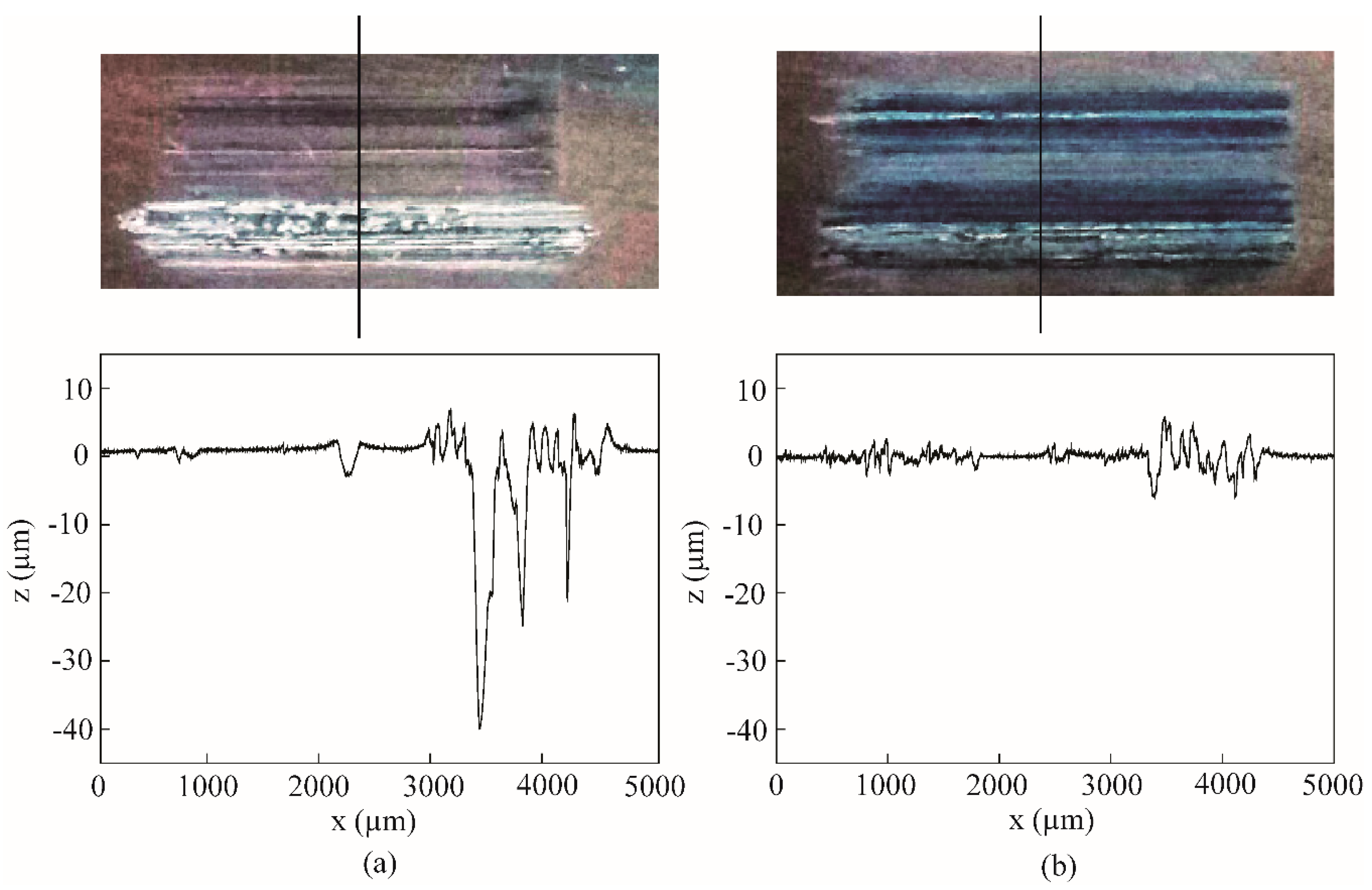
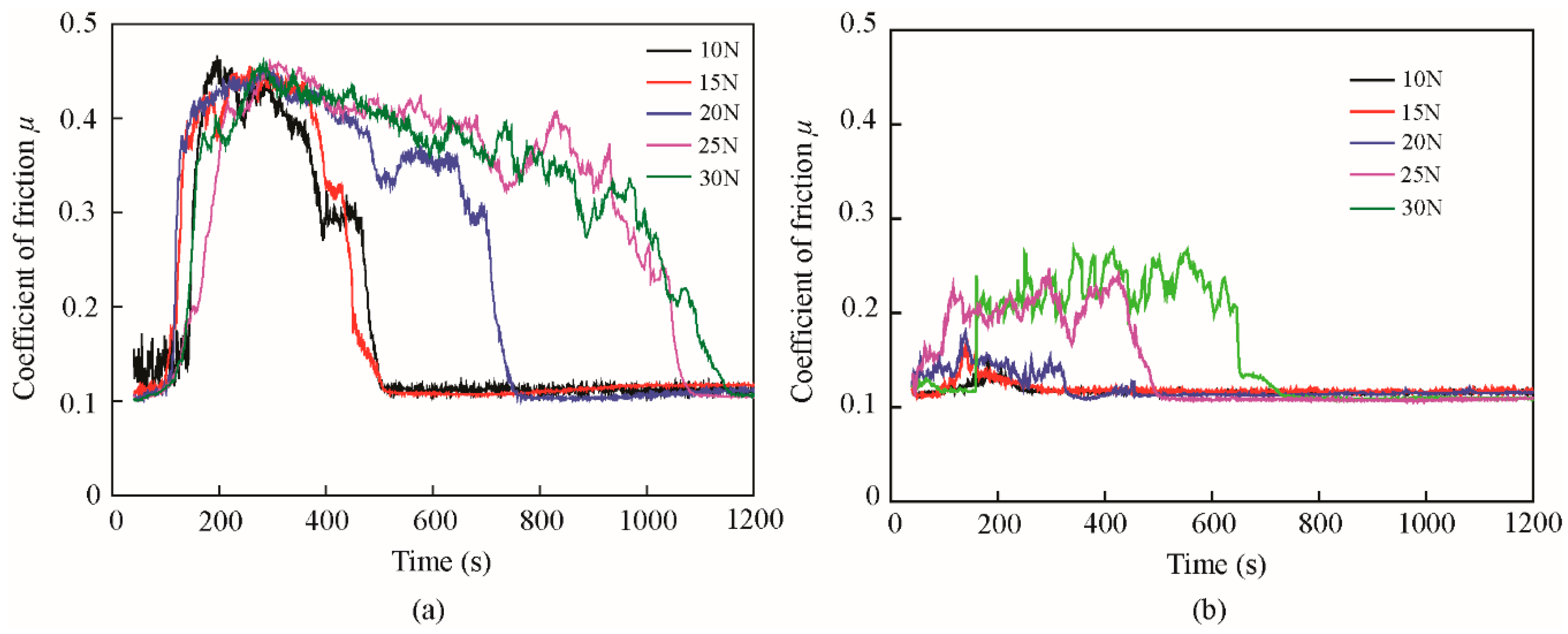
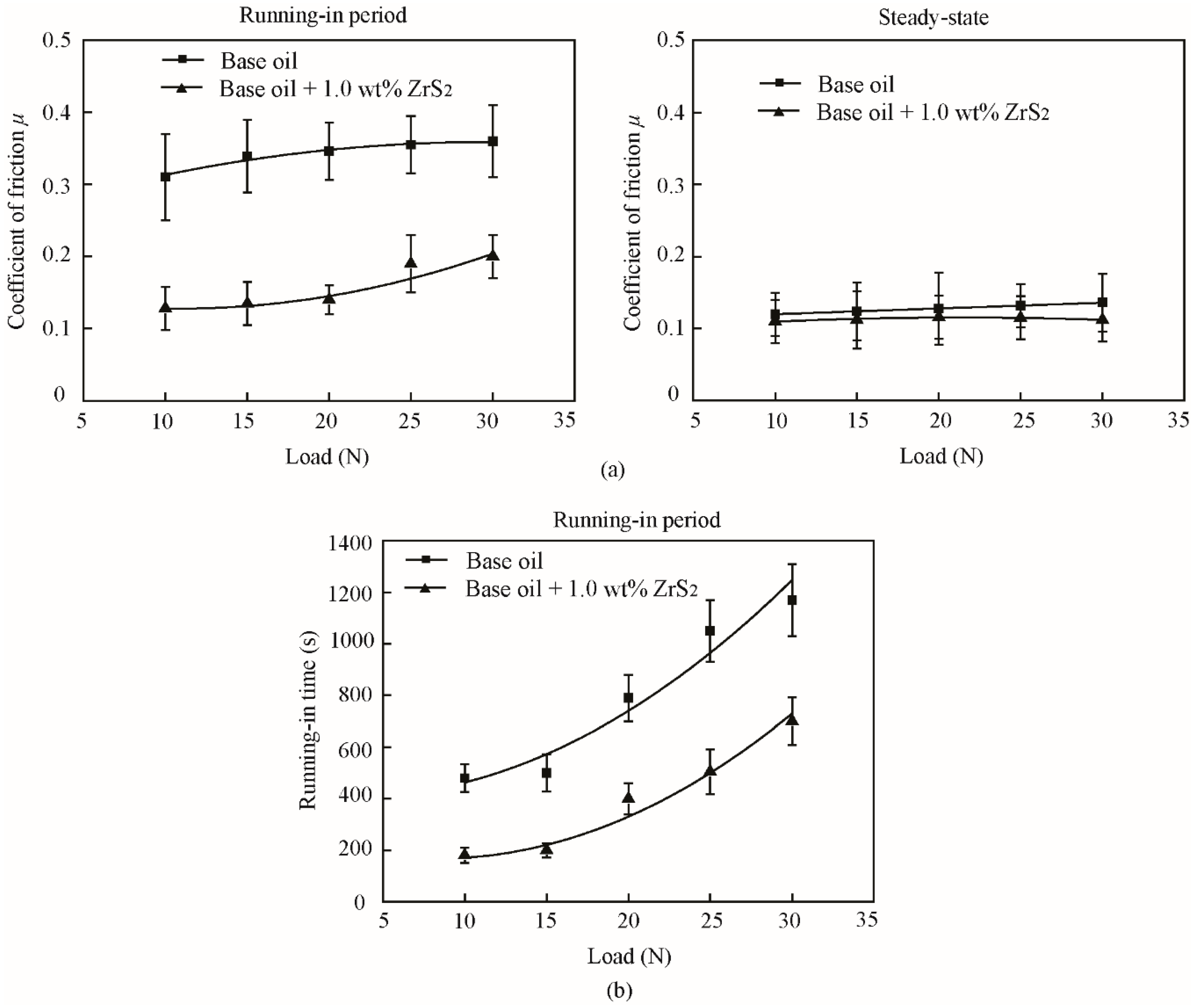
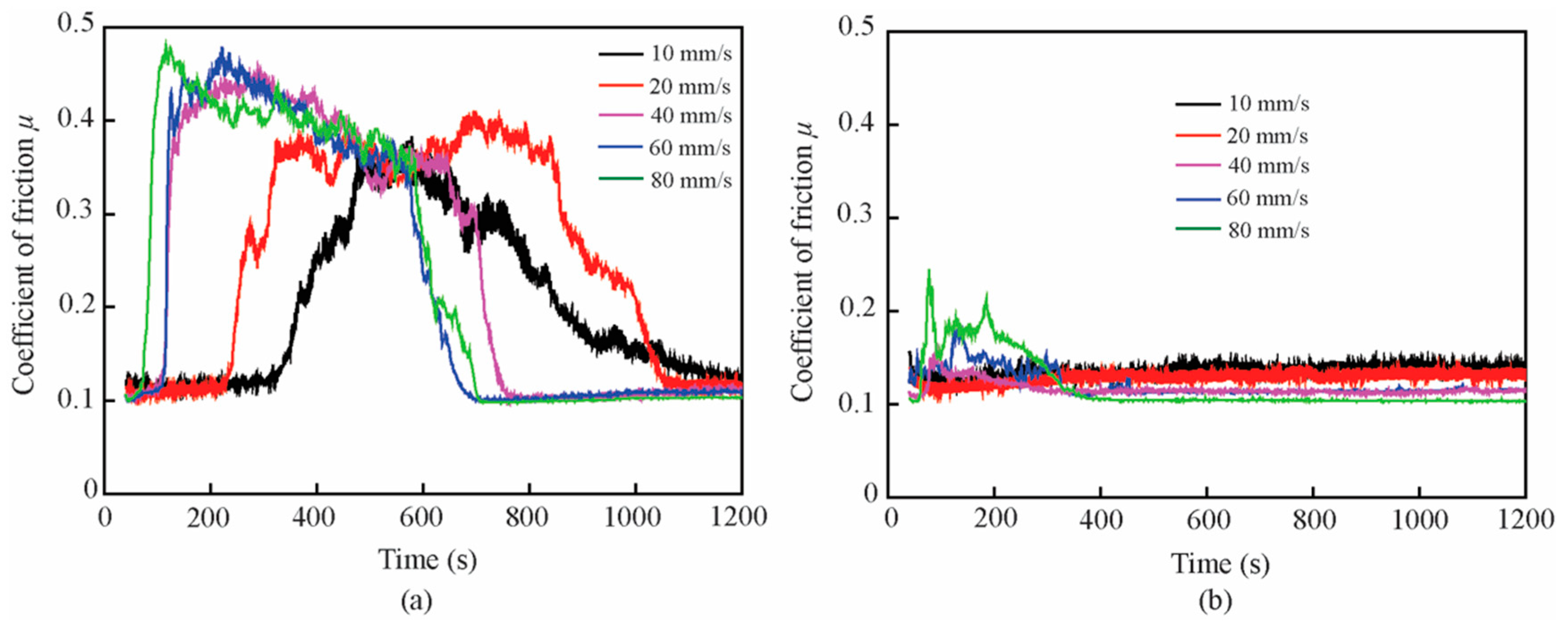
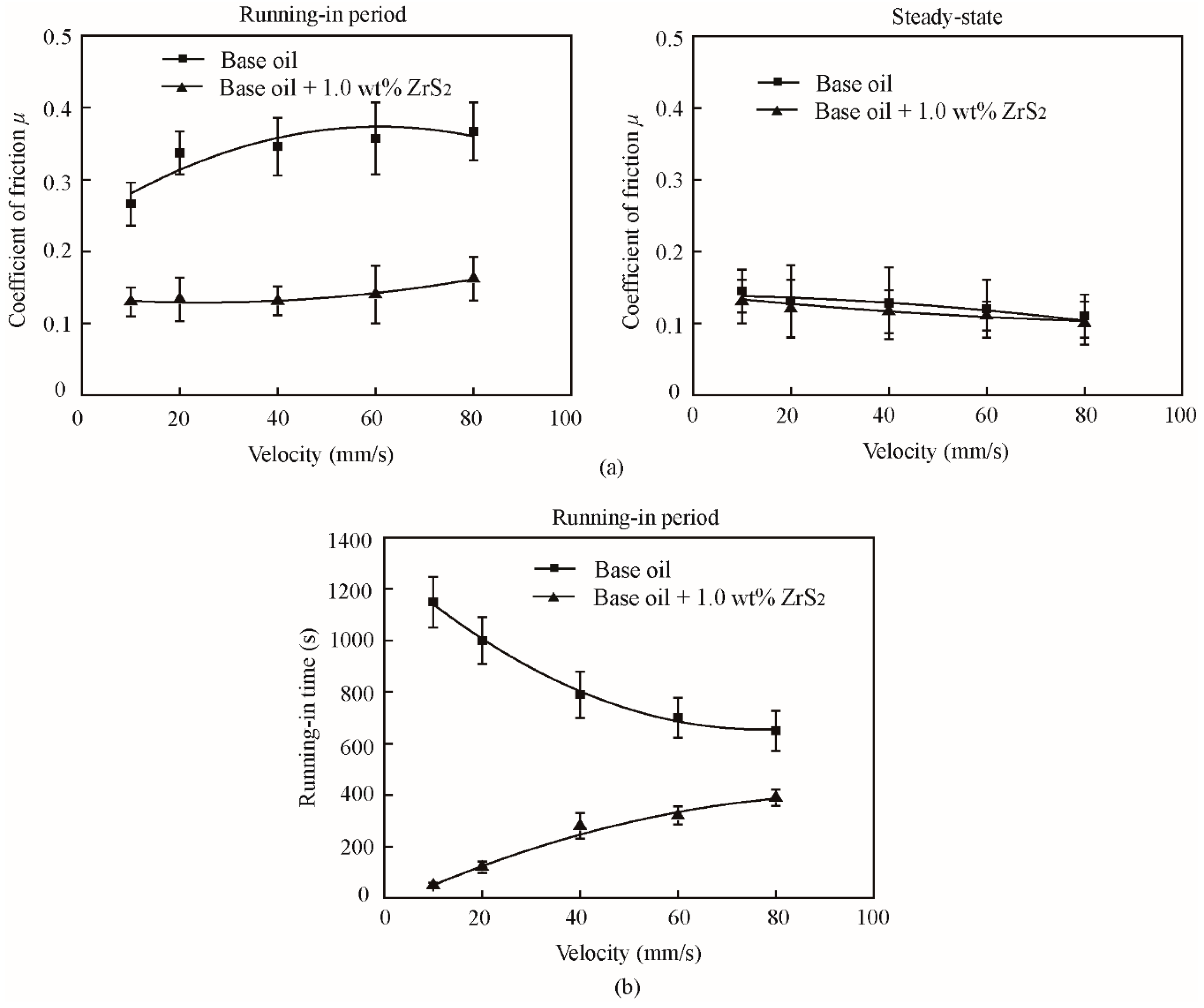
| Material | Tensile Strength (MPa) | Yield Strength (MPa) | Hardness | Size (mm) | |
|---|---|---|---|---|---|
| Ball disk | 9Cr18 | 741 | 295 | 58 HRC (Rockwell C Hardness) | ϕ10 |
| 1Cr18Ni9Ti | 680 | 265 | 158 HB (Brinell Hardness) | ϕ40 × 10 |
| C | Si | Mn | Cr | Ni | S | P | |
|---|---|---|---|---|---|---|---|
| 9Cr18 | 1.03 | 0.39 | 0.47 | 18.3 | 0.16 | 0.003 | 0.008 |
| 1Cr18Ni9Ti | 0.04 | 0.12 | 1.22 | 17.65 | 8.24 | 0.01 | 0.009 |
© 2019 by the authors. Licensee MDPI, Basel, Switzerland. This article is an open access article distributed under the terms and conditions of the Creative Commons Attribution (CC BY) license (http://creativecommons.org/licenses/by/4.0/).
Share and Cite
Tang, W.; Yu, C.; Zhang, S.; Liu, S.; Wu, X.; Zhu, H. Antifriction and Antiwear Effect of Lamellar ZrS2 Nanobelts as Lubricant Additives. Nanomaterials 2019, 9, 329. https://doi.org/10.3390/nano9030329
Tang W, Yu C, Zhang S, Liu S, Wu X, Zhu H. Antifriction and Antiwear Effect of Lamellar ZrS2 Nanobelts as Lubricant Additives. Nanomaterials. 2019; 9(3):329. https://doi.org/10.3390/nano9030329
Chicago/Turabian StyleTang, Wei, Chuang Yu, Shaogang Zhang, Songyong Liu, Xingcai Wu, and Hua Zhu. 2019. "Antifriction and Antiwear Effect of Lamellar ZrS2 Nanobelts as Lubricant Additives" Nanomaterials 9, no. 3: 329. https://doi.org/10.3390/nano9030329
APA StyleTang, W., Yu, C., Zhang, S., Liu, S., Wu, X., & Zhu, H. (2019). Antifriction and Antiwear Effect of Lamellar ZrS2 Nanobelts as Lubricant Additives. Nanomaterials, 9(3), 329. https://doi.org/10.3390/nano9030329







